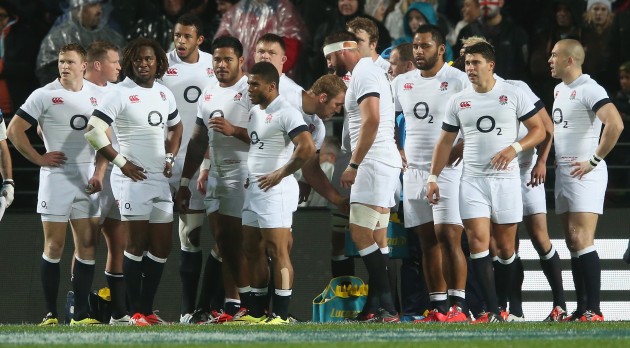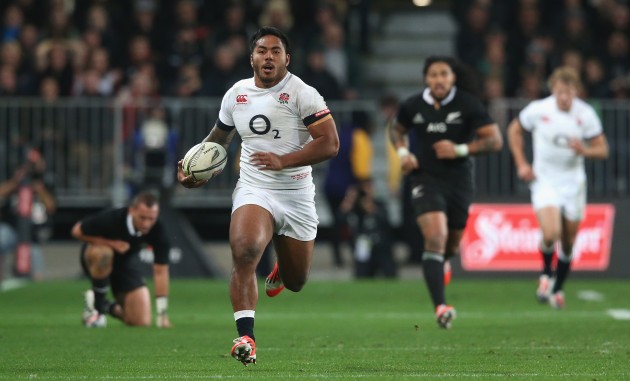With the players now ensconced in their 31-man squads, many continue to question how coaches have come to certain conclusions, not least England
By Will Macpherson
Making sense of World Cup squads is an exercise carried out on two levels. Firstly, things are best kept simple: who’s in, who’s out, which coach nailed it and who’s made an utter horlicks of things. Thirty-one, while one more than coaches have been allowed at recent World Cups, really isn’t very many, especially for the talent-rich powerhouses whose squads garner the most interest. A good coach and a good selector are two utterly different things, remember.
Then there’s the why, the search for trends and patterns, which positions are in fashion, which ones actually matter most? Where can gambles be taken, and where do the hatches need to be truly battened down? Can a “bolter” truly be a bolter when there’s two other “bolters” in the squad? Do you really need three scrum-halves? Choose a random number between three and five as to how many locks you need. Two? You’re going with just two hookers?

Grunt: Jim Hamilton has announced his retirement after being overlooked by Scotland for the Rugby World Cup
There are, without doubt, some peculiar, lefter than leftfield choices – I’m looking at you, John Hardie – but most fans seem to worry more about who misses out, rather than who makes it in. Sticking with that Scottish theme, it seems unfathomable that both Blair Cowan – perhaps their finest loosie in recent times – and John Barclay can be left out. It’s equally difficult to imagine that 30 minutes of Jim Hamilton brimstone and fire wouldn’t have been welcome at some stage in place of the go-forward and energy of a Gray brother.
Likewise England. It’s those left behind that seem to rankle. At least all us fans of all things silky – ie Danny Cipriani (Cipporters, anyone?) – had the news broken to us a day early. And indeed that was a decision that made a bit of sense, even if the tournament is that much less exciting without him. Shortly after, the internet had kindly conjured up a meme showing the shape of an XV Lancaster was able to do without, and of course it looked great.
With England, it’s hard not to wonder how it came to this. Dylan Hartley and Manu Tuilagi were authors of their own destiny, of course, and France-based folk all but forced Lancaster’s hand, but not entirely. But how did England end up with a situation where the four centres go into the tournament with fewer than 40 caps between them, and as many players in the squad will arrive with two caps or less as 50 or more (three each). All the “culture” in the world can’t substitute experience, and which ever way you spin it – and whichever colour they play in – England look green.
The thing that’s struck me most about this England squad and the sheer uncertainty around it, is how heartily I would have scoffed had you handed it to me on a piece of paper a year ago. Somehow, somewhere along the line, for various reasons, seven England men chosen for the Lions in 2013 haven’t ended up making the World Cup squad. That tour of New Zealand – that catalogue of near misses – was billed at the time as a near-final chance to impress.
Instead, the squad has a rather different look to it. Of the seven players who started in the three-quarters in the three Tests on that tour, only Jonny May (who played 79 of 240 minutes) has made the World Cup squad. One-fifth of the eventual squad ended that tour uncapped. Seemingly established squad members have withered, on the field and off it. Dave Attwood, Billy Twelvetrees and even Luther Burrell had plenty of opportunities to nail their places, and didn’t. As classy as they all will end up being, there is, in truth, no need for any of George Kruis, Henry Slade or Sam Burgess to be in this squad. Lancaster invested time and caps in those others and they haven’t done enough.
New Zealand, of course, are the opposite. Since that tour last year they’ve simply streamlined themselves, ditching class acts in favour of class acts in better form, with Charles Piutau the only player genuinely unlucky to miss out, not so Cory Jane and Israel Dagg. The pack is the same, but the finishers tweaked; they look as fearsome as ever.
Finally, to Wales. Warren Gatland’s plumping on two hookers is bold, but it’s hard to argue he’s nailed the PR battle. He did his big omissions weeks before the deadline, he’s given himself vital cover for his most important player (AWJ) and his surprise pick – if you can call Matthew Morgan that – is the sort of romantic player that Welshmen want to be and Welsh women want to be with. Of course, this is just the phoney war, but Gatland has risen to the occasion again.







